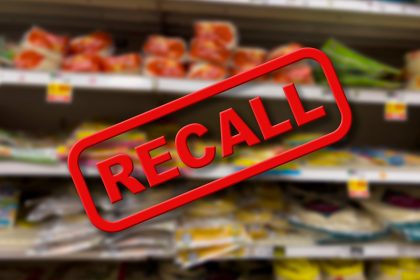The nation faces an unprecedented wave of food safety concerns as major recalls linked to Listeria contamination affect millions of households across America. From ready-to-eat meats to breakfast staples, the scope of these recalls has raised critical questions about food safety protocols and consumer protection measures.
The scale of recent recalls shakes consumer confidence
October 2024 has emerged as a watershed moment in food safety oversight, with the USDA’s Food Safety and Inspection Service announcing one of the largest meat recalls in recent history. The initial recall of 10 million pounds of ready-to-eat meat and poultry products from BrucePac quickly expanded to 12 million pounds, affecting products ranging from prepared salads to frozen meals distributed through major retail chains nationwide.
Breakfast foods join the contamination crisis
The scope of concern widened when TreeHouse Foods initiated a voluntary recall of approximately 700 frozen waffle products. This recall affected multiple national brands and retailers, demonstrating how a single contamination source can ripple through various supply chains and impact diverse product categories.
Understanding the invisible threat
Listeria monocytogenes presents a unique challenge in food safety due to its resilient nature. This bacteria thrives in various environments, from soil and water to food processing facilities, making it particularly difficult to control. Its ability to survive and multiply even in refrigerated conditions sets it apart from many other foodborne pathogens.
The demographics of danger
While Listeria infections affect approximately 1,600 Americans annually, the impact varies significantly across different population groups. The elderly, pregnant women, and individuals with compromised immune systems face the highest risk, with about 260 fatal cases reported each year. For pregnant women, the consequences can be particularly severe, potentially leading to pregnancy loss or serious complications.
The anatomy of contamination
Understanding how Listeria contamination occurs reveals the complexity of modern food production systems. The bacteria can enter the food supply at multiple points:
- Agricultural sources (soil and water)
- Processing facility environments
- Cross-contamination during packaging
- Temperature abuse during storage or transport
- Inadequate cleaning and sanitization procedures
High-risk foods under scrutiny
Certain food categories face higher contamination risks due to their production methods and storage requirements:
- Ready-to-eat deli meats
- Unpasteurized dairy products
- Soft cheeses
- Pre-packaged salads
- Refrigerated smoked seafood
- Raw sprouts
- Cut melons
Recognizing infection symptoms
The manifestation of Listeria infection follows a complex timeline:
- Initial symptoms (24-48 hours): Mild gastrointestinal discomfort
- Progressive symptoms (1-4 weeks): Fever, muscle aches, fatigue
- Severe cases: Confusion, stiff neck, loss of balance
- Pregnancy-specific concerns: Mild flu-like symptoms masking serious risks
Taking action with recalled products
Consumer response to recalls requires careful attention to detail:
- Check product codes against recall notices
- Document purchase information
- Photograph packaging if possible
- Return items to the point of purchase
- Request refund documentation
- Monitor health symptoms
- Report adverse reactions to health authorities
Prevention strategies for vulnerable populations
Implementing comprehensive prevention measures becomes crucial for high-risk individuals:
- Choose hard cheeses over soft varieties
- Heat deli meats to steaming before consumption
- Avoid raw milk products
- Select pasteurized dairy exclusively
- Cook ready-to-eat foods thoroughly
- Maintain strict kitchen hygiene
The role of temperature control
Proper temperature management stands as a critical defense against Listeria proliferation:
- Maintain refrigerator temperature at or below 40°F
- Monitor freezer settings for consistent temperature
- Use appliance thermometers for verification
- Check food temperature during preparation
- Ensure proper cooling of heated foods
Modern detection and prevention methods
Advanced food safety protocols incorporate multiple layers of protection:
- Environmental monitoring programs
- Rapid testing technologies
- Enhanced cleaning protocols
- Supply chain traceability systems
- Employee training programs
Industry response and adaptation
The food industry continues to evolve its approach to Listeria prevention:
- Implementation of advanced testing protocols
- Enhancement of sanitation procedures
- Development of new preservation technologies
- Improvement of cold chain management
- Strengthening of supplier verification programs
The future of food safety
Moving forward, several key areas demand attention:
- Integration of artificial intelligence in monitoring
- Development of more sensitive detection methods
- Implementation of blockchain for traceability
- Enhancement of rapid response protocols
- Strengthening of international cooperation
Consumer empowerment through knowledge
Understanding food safety extends beyond following recall notices. Consumers must develop:
- Awareness of high-risk foods
- Knowledge of proper food handling
- Recognition of contamination signs
- Understanding of safe storage practices
- Familiarity with cooking temperature requirements
The recent wave of Listeria-related recalls serves as a crucial reminder of the ongoing challenges in food safety. While regulatory agencies and manufacturers work to prevent contamination, consumers must remain vigilant and informed. Through proper handling, storage, and preparation of food items, along with awareness of recall notices and risk factors, individuals can significantly reduce their exposure to foodborne illness. As our food system continues to evolve, the partnership between industry, regulators, and consumers remains essential in maintaining public health and safety.















